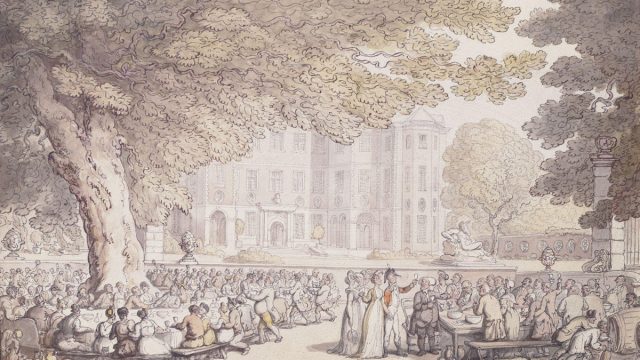Each term the V&A/RCA History of Design Research Seminar Series provides a forum for the newest and most exciting thinking in design history and material culture studies. To continue the discussion beyond the confines of our seminar rooms, current MA students have written short, illustrated responses.
This week’s post, by MA candidate Zara Arshad, considers Dr Maurizio Marinelli’s recent talk, ‘Saving the “Vital living past” of Hong Kong: Stories of urban resistance in the Central District’.
Over to Zara…
***
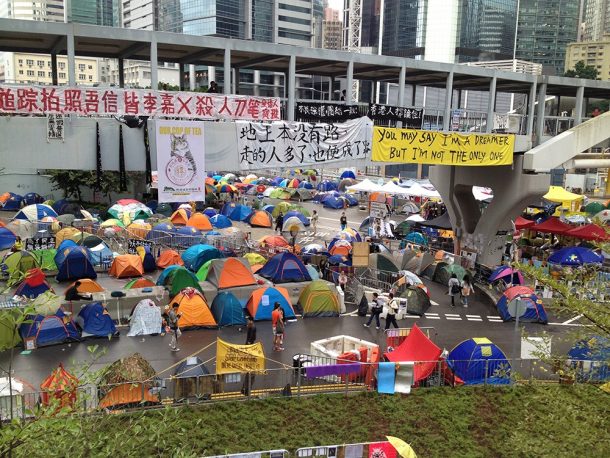
The protests that took place in Hong Kong last year, popularly referred to as the Umbrella Movement, made visible to the world tensions between the government and city residents, disrupting the grand narrative of Hong Kong as exemplary of a successful, new global city of luxury.
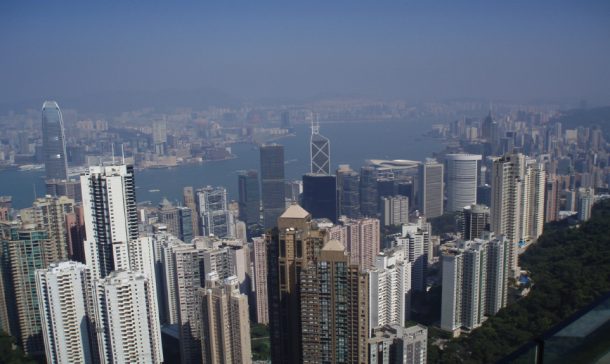
Events illustrated that, behind the glittering facades, there was another story to tell, one that not only involved requests for democracy and universal suffrage, but also a demand to address (or readdress) the widening gap between rich and poor. Recent statistics, for example, suggest that approximately 20% of Hong Kong residents currently live below the poverty line.
The Umbrella Movement, thus, epitomised the battle for the city through its occupation and reclamation of space, which saw a standoff between the government and the citizens of Hong Kong until December 2014, when protest sites were forcefully cleared by local police.
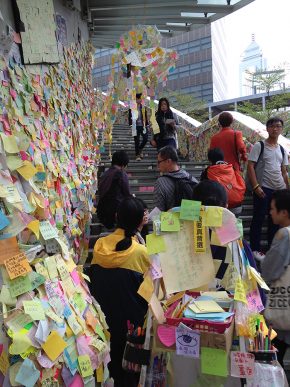
The fight for central Hong Kong and the control of urban space were themes that were eloquently unravelled by Dr Maurizio Marinelli, Senior Lecturer in East Asian History at the University of Sussex, in his talk.
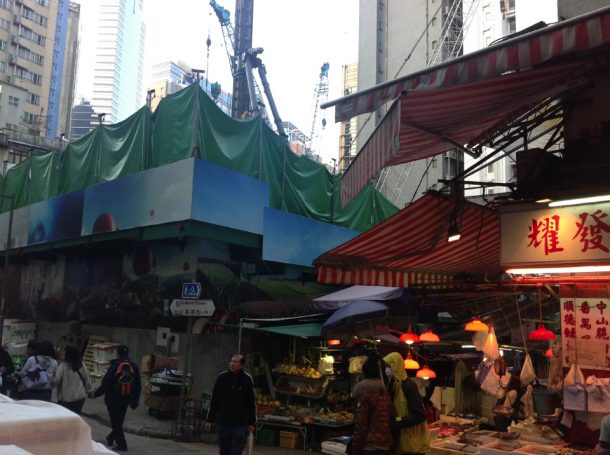
Marinelli chose street hawking and street markets as his lens of enquiry, demonstrating how the latter not only serve as localised and cost effective alternatives to supermarkets for fresh produce, but also provide local customers with the chance to interact directly with producers, distributors, and ultimately, with each other.
In this sense, street markets act as spaces of social inclusion, laboratories for collective experiences of public space and ‘living heritage’. Moreover, they have become the testing grounds for bottom-up practices of democratisation, as local communities battle to preserve these culturally and usually historically significant spaces.
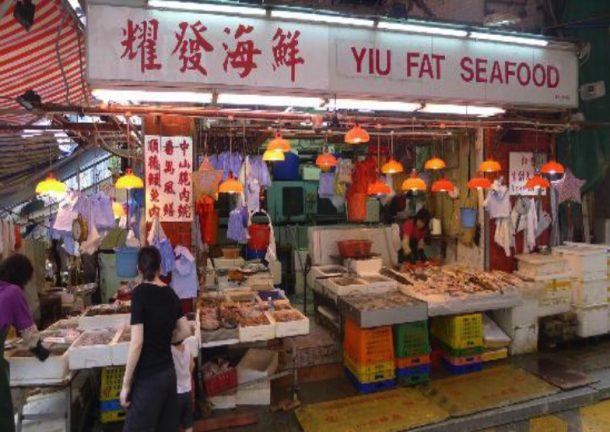
In pursuit of progress, modernity and for the improvement of public health, the government has adopted a more active role in disciplining public space in Hong Kong since the 1970s, especially since 1989. The outcome, as argued by Marinelli, has been the development of ‘modern’, ‘civilised’ and ‘hygienic’ urban spaces that annihilate ‘living heritage’ like Graham Street Market in Central district, the primary focus of his talk. Founded in 1841, this market existed as an informal socio-economic space until 1946, when the government decided to issue the first operational licenses.
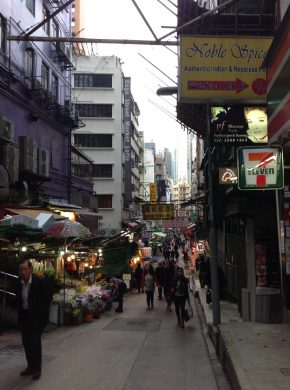
Steps towards gentrification were taken in 2003 after the Urban Renewal Authority (URA), a government body tasked with the promotion of urban regeneration, declared the area a slum. Plans to demolish the buildings on Graham Street subsequently followed in 2007, which would see the dismantling of the market as well. The implementation of the URA development plans will be fully completed by 2017 in an operation that will demand a staggering 487 million HK dollars (3.8 billion US).
The ‘regeneration’ initiatives have provoked a series of reactions and commentaries from the media, NGOs, community groups and individuals alike. In 2008, the Central and Western Concern Group, a community organisation that advocates for ‘good urban planning and better heritage conservation in Hong Kong’, published a bilingual (Chinese and English) fold-out pamphlet under the title ‘Our Vital Living Past’.
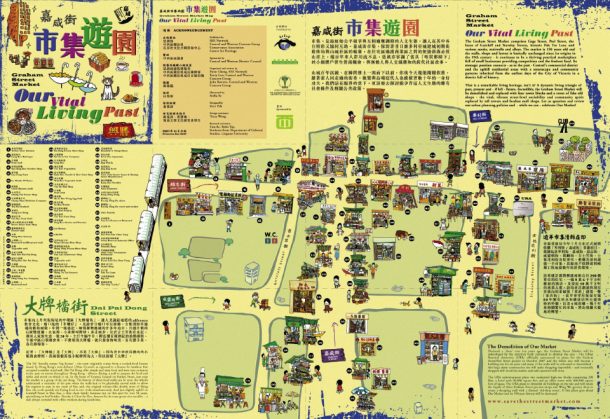
When laid out in full, a large map of Graham Street Market and its surrounding area is revealed. This employs a playful, cartoon-like aesthetic and introduces the location as a ‘walking garden’, or a space that has been specifically designed for leisurely strolling in. Short texts embedded within the map not only stress the historical significance of the site, but draw on concepts around ‘neighbourhood’, linking specific places with anecdotal stories. A more obvious and direct critique of the URA regeneration plans sit under the title ‘The Demolition of Our Market’, where the use of the word ‘our’ specifically builds on the idea of a shared community heritage.
Marinelli efficiently moves from the collective to the individual, illustrating that urban resistance can be more personal and gestural, too. He cites the example of Mr Leung, a local fisherman, who defiantly plants himself on one corner of Graham Street Market to sell his freshly caught, and then smoked, fish – a routine that he has maintained for the last five decades.
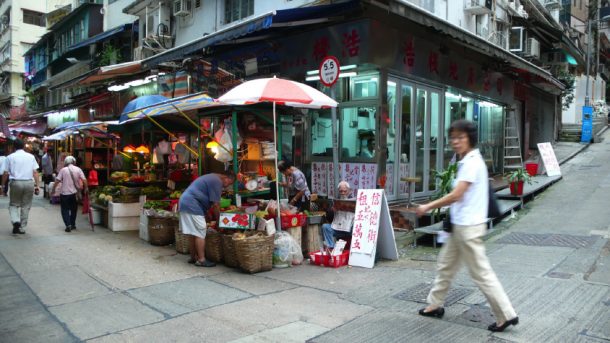
What is most striking, however, are his contextual surroundings: as he reads the local newspaper, his wares are modestly displayed in a plastic basket on the roadside directly in front of him, and his makeshift pitch is almost engulfed by the surrounding advertising boards that announce the rise of property prices in the district.
This is illustrative of how the improvised may co-exist with the increasingly regulated, a process that involves constant negotiation between the various stakeholders involved. These negotiations can sometimes lose significance against the backdrop of a rapidly changing urban fabric, and it is these interactions, as well as the relationships between the tangible and the intangible, that Marinelli necessarily draws to our attention.
***
Follow Zara Arshad on Twitter.
More student reviews of past seminars can be found here, with full details of the most recent V&A/RCA History of Design Research Seminar Series on the RCA website.

